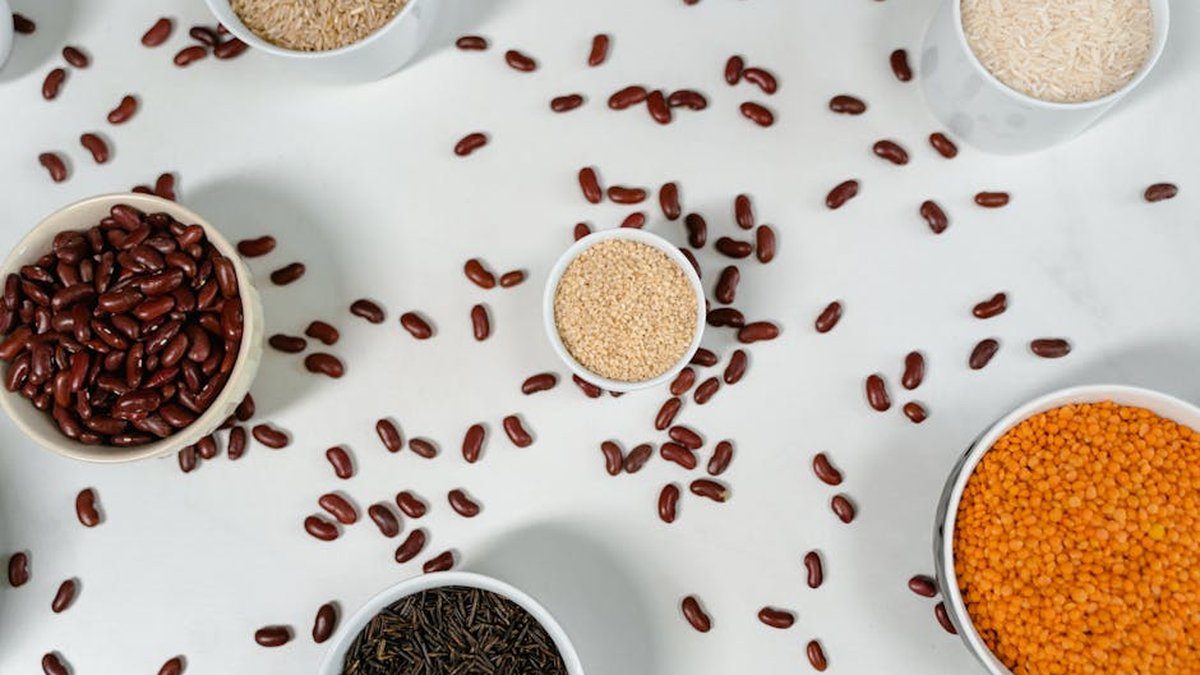The Ultimate Guide to Plant-Based Protein Sources
Plant-based diets are becoming increasingly popular, and for good reason! They offer numerous health benefits and are more sustainable for the planet. One common concern people have when transitioning to a plant-based lifestyle is getting enough protein. But fear not! There’s a wide array of delicious and nutritious plant-based protein sources available. This guide will explore the best options and how to incorporate them into your diet.
Why Plant-Based Protein Matters
Protein is essential for building and repairing tissues, producing enzymes and hormones, and supporting overall health. While animal products are often considered the primary source of protein, plants can provide all the necessary amino acids, the building blocks of protein, that our bodies need.
Complete vs. Incomplete Proteins
Proteins are made up of amino acids. There are nine essential amino acids that our bodies cannot produce on their own, so we must obtain them from our diet. A complete protein contains all nine essential amino acids in adequate amounts. Animal products are typically complete proteins. Some plant-based sources, like quinoa and soy, are also complete proteins. Incomplete proteins lack one or more essential amino acids. However, by combining different plant-based protein sources, you can easily obtain all the essential amino acids you need.
Top Plant-Based Protein Sources
Here are some of the best plant-based protein sources to include in your diet:
Legumes
Legumes are a fantastic source of protein and fiber. They are also rich in iron, folate, and other essential nutrients.
- Lentils: A versatile and inexpensive option. Use them in soups, stews, salads, or as a meat substitute in dishes like lentil loaf. One cup of cooked lentils contains about 18 grams of protein.
- Beans: Kidney beans, black beans, chickpeas, and pinto beans are all excellent choices. They can be used in chili, burritos, salads, and dips. One cup of cooked black beans contains about 15 grams of protein.
- Peas: Green peas and split peas are also good sources of protein and fiber. One cup of cooked green peas contains about 8 grams of protein.
- Soybeans: Soybeans are a complete protein source. Tofu, tempeh, and edamame are all derived from soybeans.
Soy Products
Soy products are a versatile and complete protein source.
- Tofu: Made from condensed soybean curd, tofu is a blank canvas that can absorb flavors well. It can be baked, fried, stir-fried, or added to soups and smoothies. A 3.5-ounce serving of tofu contains about 8 grams of protein.
- Tempeh: Made from fermented soybeans, tempeh has a nutty flavor and a firm texture. It can be grilled, baked, or stir-fried. A 3.5-ounce serving of tempeh contains about 19 grams of protein.
- Edamame: These young soybeans are often steamed or boiled and served as a snack. One cup of cooked edamame contains about 18 grams of protein.
Nuts and Seeds
Nuts and seeds are a good source of protein, healthy fats, and fiber. They are also rich in vitamins and minerals.
- Almonds: A handful of almonds makes a great snack. They are also a good source of vitamin E and magnesium. One ounce of almonds contains about 6 grams of protein.
- Chia Seeds: These tiny seeds are packed with protein, fiber, and omega-3 fatty acids. Add them to smoothies, yogurt, or oatmeal. Two tablespoons of chia seeds contain about 5 grams of protein.
- Hemp Seeds: Hemp seeds are a complete protein source. They have a mild, nutty flavor and can be added to smoothies, salads, or yogurt. Three tablespoons of hemp seeds contain about 10 grams of protein.
- Pumpkin Seeds: Also known as pepitas, pumpkin seeds are a good source of protein, iron, and zinc. One ounce of pumpkin seeds contains about 7 grams of protein.
Grains
Certain grains offer a notable amount of protein.
- Quinoa: A complete protein source that is also high in fiber and iron. It can be used as a side dish, in salads, or as a base for bowls. One cup of cooked quinoa contains about 8 grams of protein.
- Oats: A great source of fiber and protein. Enjoy them as oatmeal, granola, or in baked goods. One cup of cooked oats contains about 6 grams of protein.
- Brown Rice: While not as high in protein as quinoa, brown rice provides a decent amount along with fiber and other nutrients. One cup of cooked brown rice contains about 5 grams of protein.
Vegetables
While not as concentrated as other sources, some vegetables contribute to your daily protein intake.
- Spinach: A leafy green packed with nutrients, including protein. One cup of cooked spinach contains about 5 grams of protein.
- Broccoli: Another nutrient-rich vegetable that offers a small amount of protein. One cup of cooked broccoli contains about 3 grams of protein.
- Asparagus: Provides protein alongside vitamins and minerals. One cup of cooked asparagus contains about 3 grams of protein.
Tips for Incorporating Plant-Based Protein
Here are some practical tips to help you incorporate more plant-based protein into your diet:
- Plan your meals: Take some time to plan your meals for the week, focusing on including a variety of plant-based protein sources.
- Combine incomplete proteins: Pair grains with legumes, or nuts with seeds to ensure you’re getting all the essential amino acids. For example, peanut butter on whole wheat bread.
- Add protein to every meal: Include a source of plant-based protein in every meal and snack.
- Experiment with recipes: Try new recipes that feature plant-based protein sources. There are countless delicious and creative ways to incorporate these foods into your diet.
- Use protein powders: Consider using plant-based protein powders, such as pea protein, rice protein, or soy protein, to supplement your diet. These can be easily added to smoothies, shakes, or baked goods.
Conclusion
Getting enough protein on a plant-based diet is not only possible but also delicious and beneficial. By incorporating a variety of legumes, soy products, nuts, seeds, grains, and vegetables into your diet, you can easily meet your protein needs and enjoy a healthy and sustainable lifestyle. Embrace the diversity of plant-based protein sources and discover the many ways to fuel your body with nature’s goodness!






